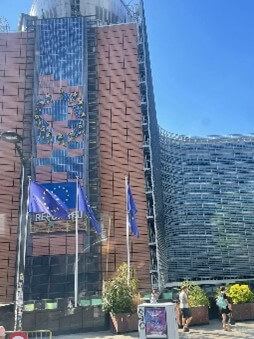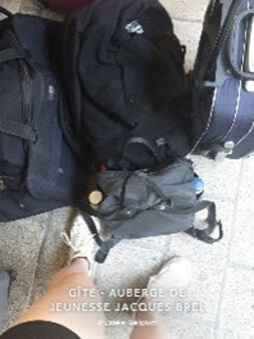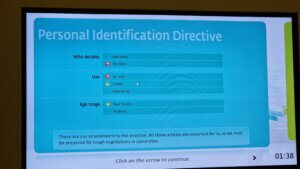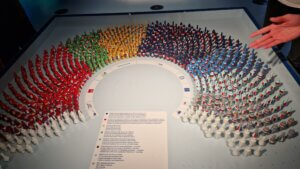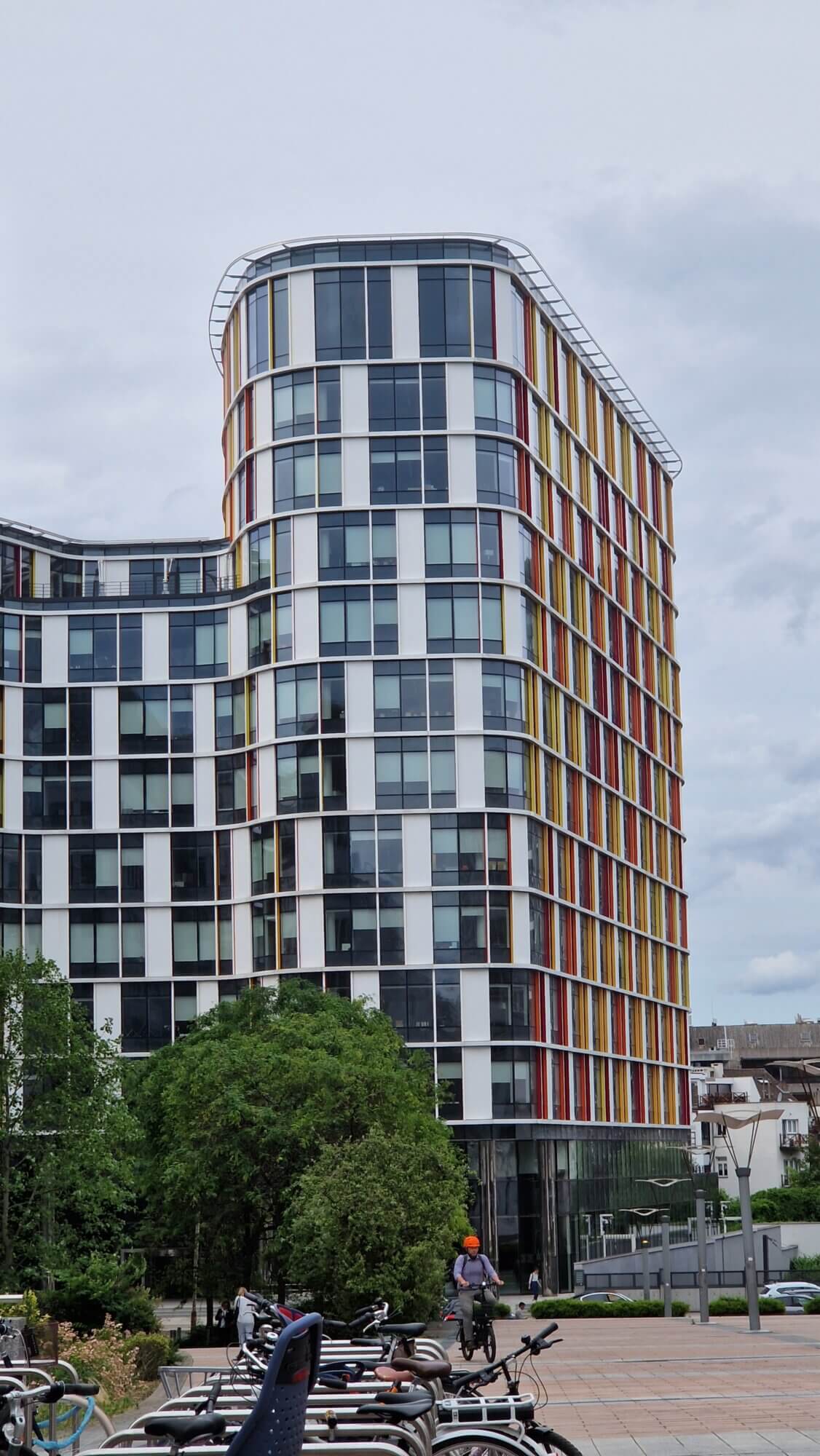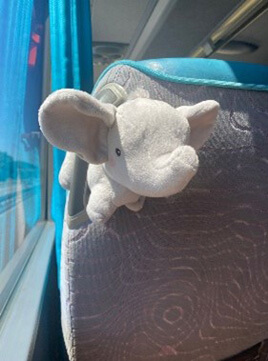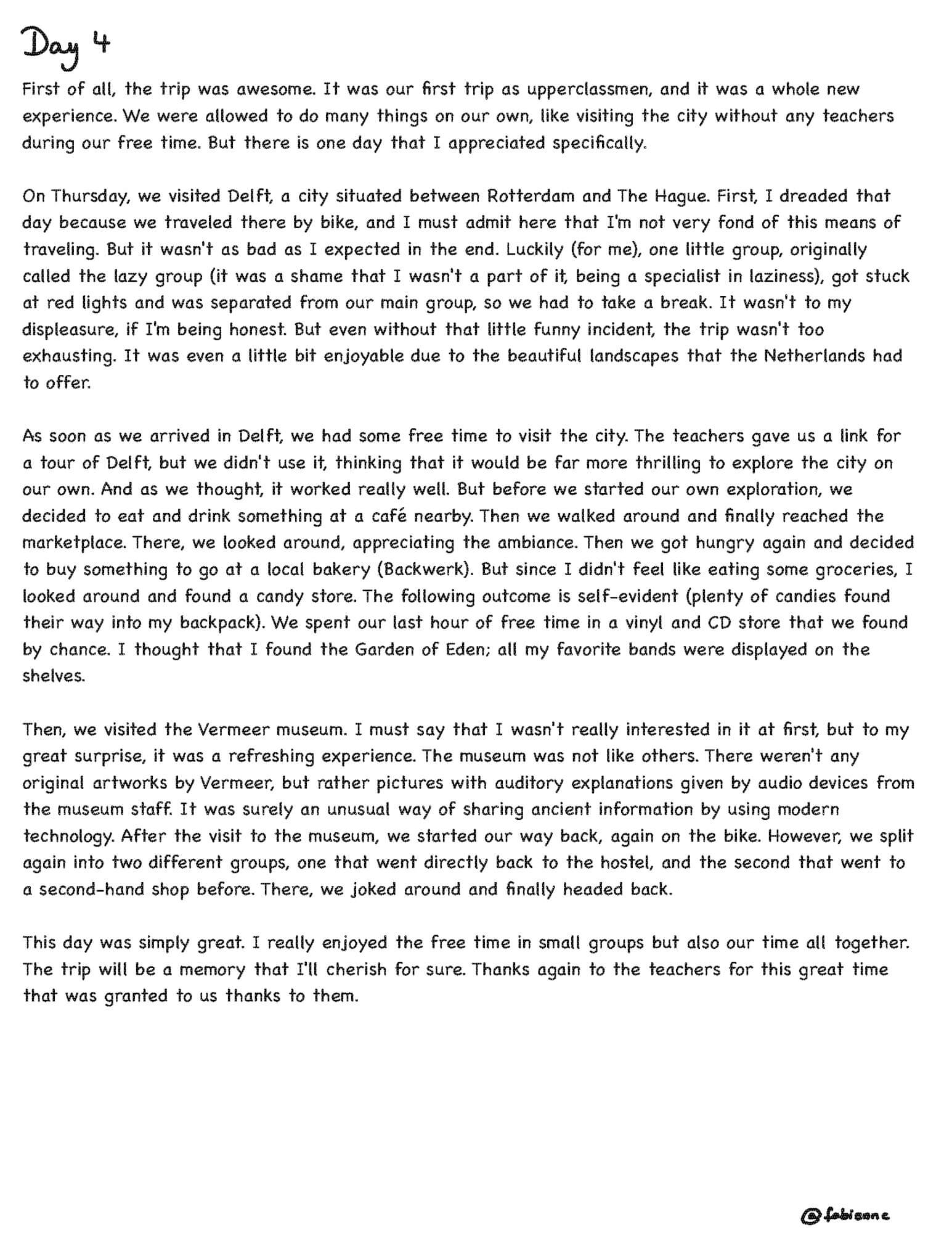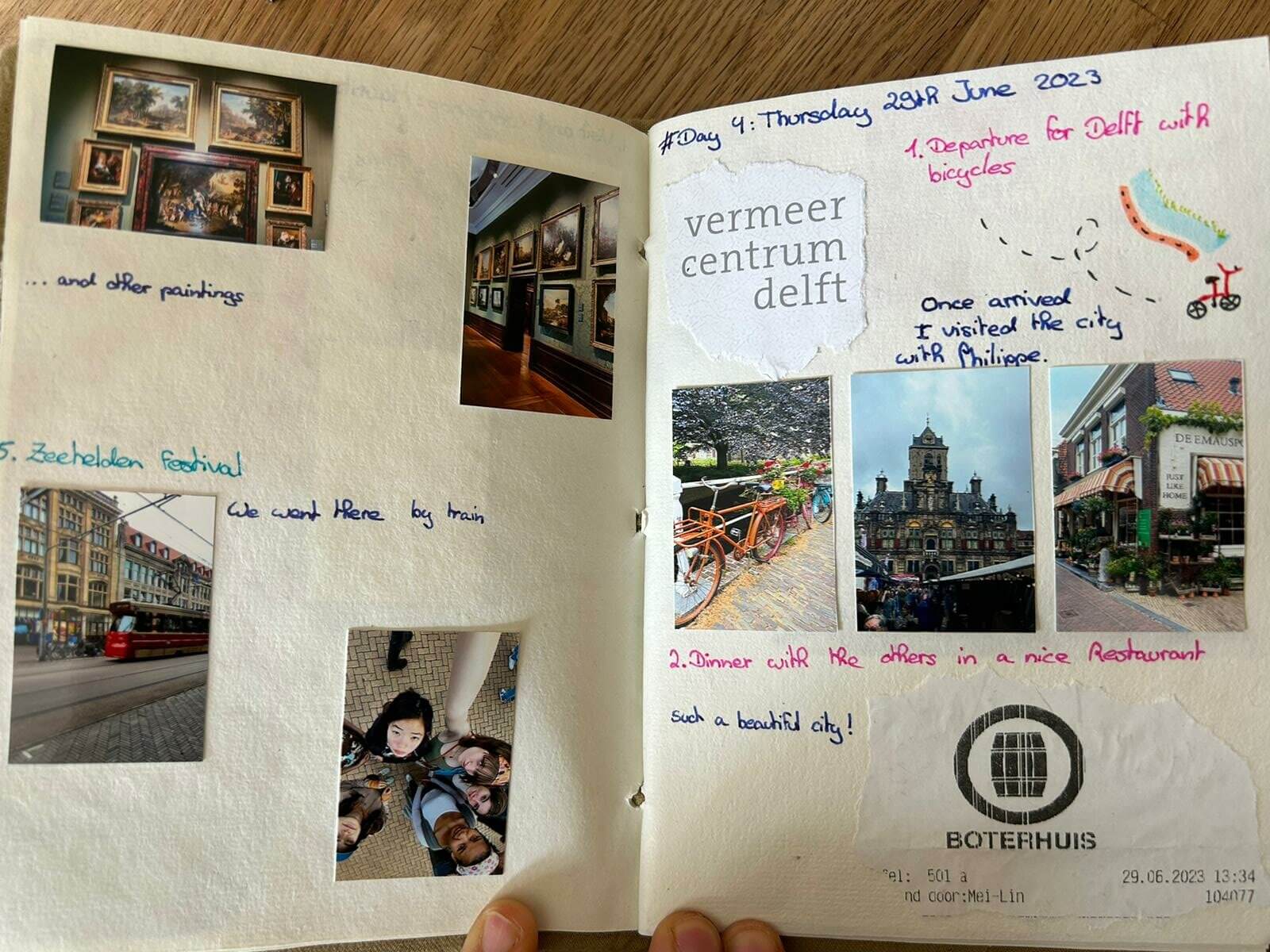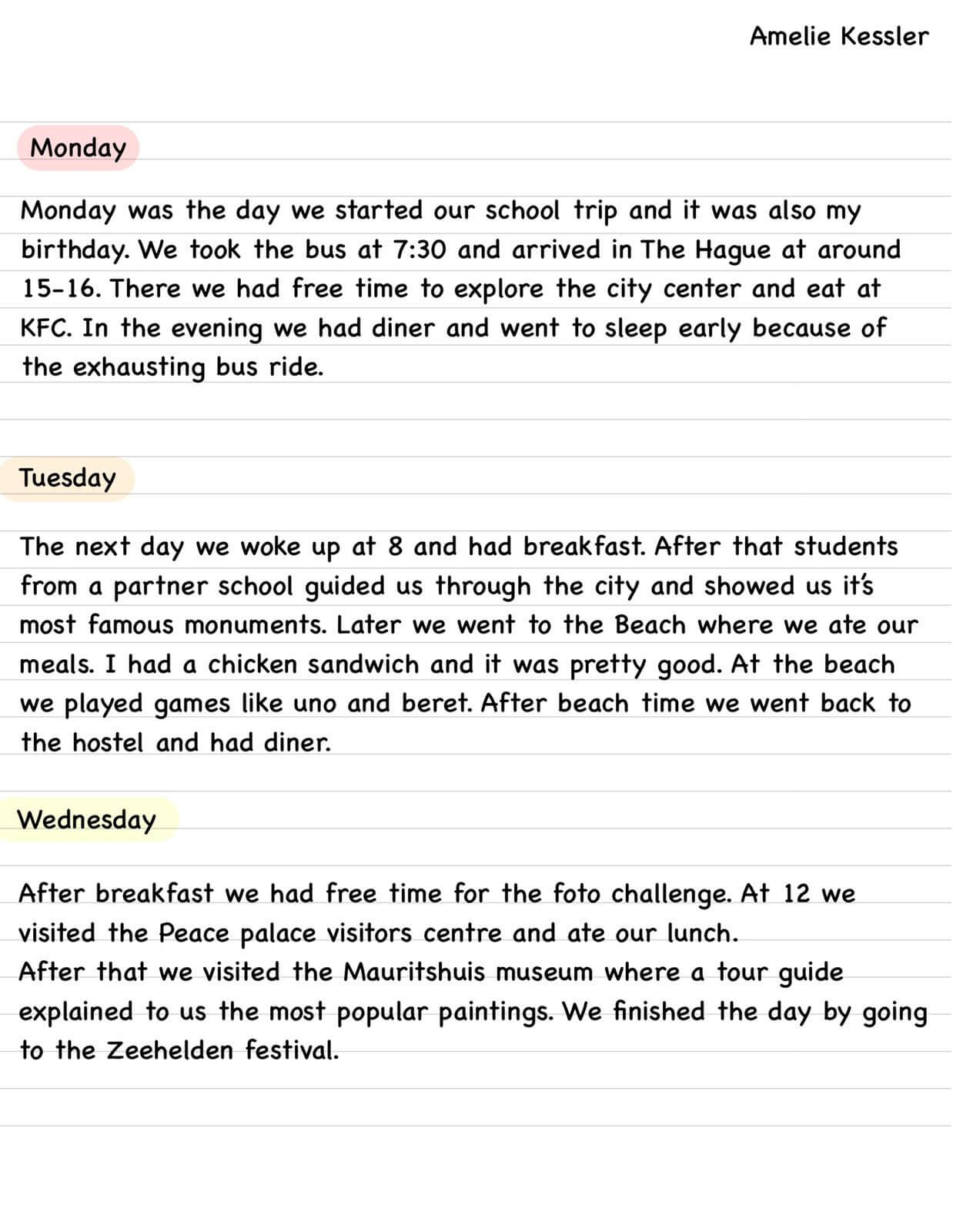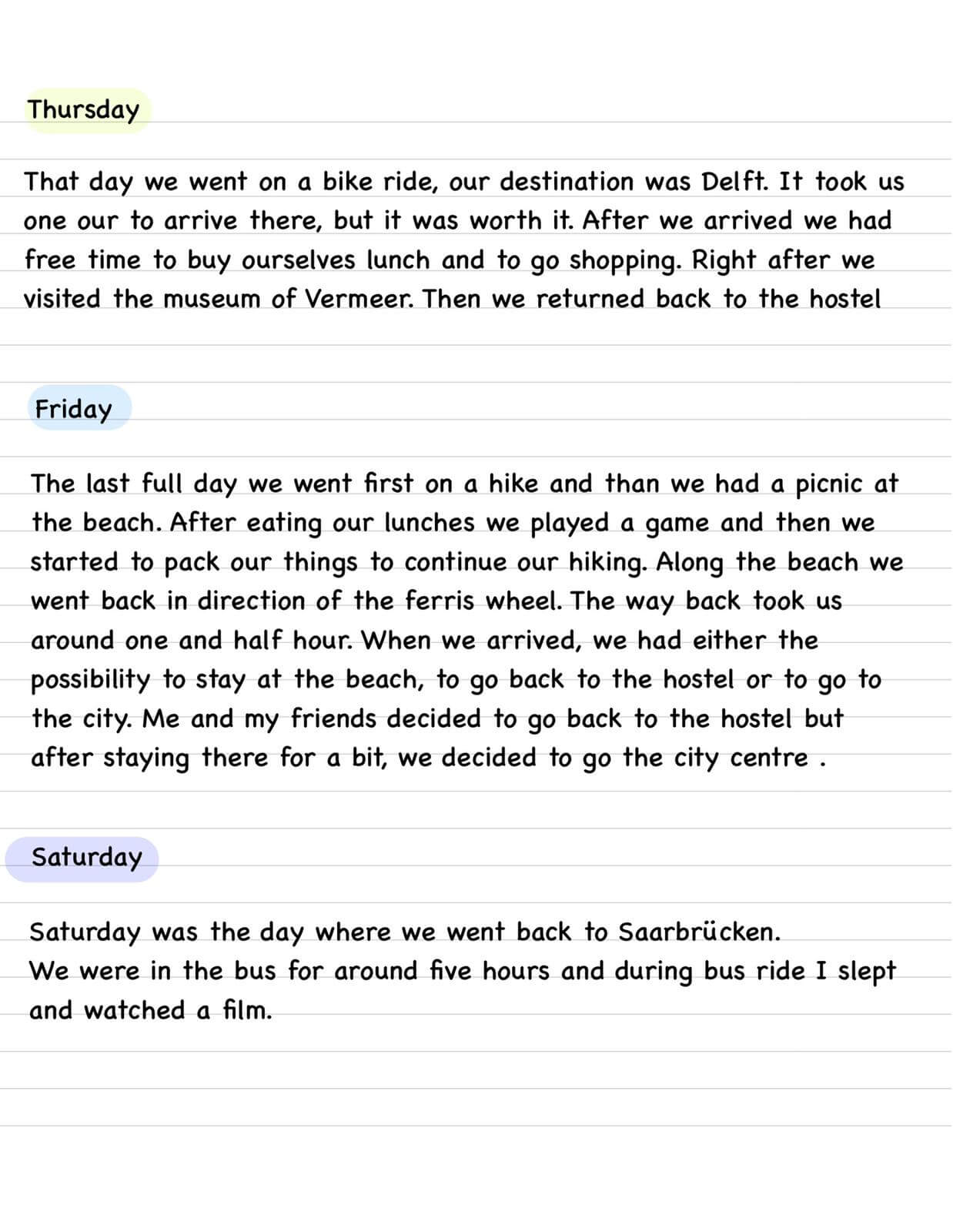June 2023 was the first time since 2017 that our 1ère pupils were offered an educational trip. This year’s attractive destinations were Brussels, Amsterdam and The Hague, each of which were visited by a group of around 30. The pupils discovered the cities from various perspectives, learning about their historical as well as current importance. The working language throughout was English and everybody was actively involved in the documenting of the trips. Let’s see what their impressions were!
Brussels
Going to Brussels
13h47 we left the school.
Then figuring out the rooms.
We stopped at a station at 16h and one was missing, so we were delayed. We arrived at 18h45.
We were all hungry and wanted to eat as soon as possible. So we went, and we were all happy. Then we all went to bed.
Report of the First Day in Brussels, on 26th June 2023
Our first day in Brussels began after a hot and humid night in the hostel.
Our “task of the day” was to explore and capture moments related to the Belgian monarchy. We started by departing for the European Parliament at 8:40 am and arrived there around 9:20 am. The check-in process at the parliament was like that of an airport.
We had a guided tour in German, and our first stop was the main room, which featured a magnificent sculpture from Belgium. Additionally, there was a painting representing each of the other countries. We delved into various topics during our tour, starting with a discussion on the President of the European Parliament, followed by European Elections and European Politics.
We learned about the structure of the European Union, with the European Commission, the Council of Ministers and the European Parliament. In the Plenary Chamber, we explored the diversity of languages and the challenges faced by translators, particularly with the German language. Two interesting facts stood out: despite the difficulties, 97% of MEP speeches are translated accurately, and due to the demanding nature of their work, translators can only work for 15 minutes before needing a break.
Our tour concluded at 11:25 am, and we had a lunch break from 11:45 am to 12:45 pm. Afterward, we visited the House of European History, where we were captivated by an exciting exhibition showcasing significant periods and moments in European history, including World War I and II.
Then the group engaged in a Parlamentarium role-play game, assuming the roles of MEPs from different political parties. We were tasked with finding a compromise to reduce water consumption and waste, as well as proposing a realistic plan for introducing chip implants. After intense discussions and negotiations, we decided to allocate 150 million euros for infrastructure improvements, research investments, and a public awareness campaign. As for the chip implants, the compromise was that they could be used for health, commercial, and security purposes, with individuals having the freedom to decide for themselves, while children required parental consent.
Finally, we had the opportunity to visit the Parlamentarium, an exhibition that delved into European relations and included the topic of Brexit. A fortunate few also had a spontaneous meeting with a Member of the European Parliament (MEP).
We concluded the day by returning to the Youth Hostel of Jacques Brel, reflecting on the enriching experiences and insights gained during our time at the European Parliament in Brussels.
En cliquant sur la vidéo, vous acceptez la communication avec le site de YouTube. Plus d'infos dans la déclaration de protection des données.
Last day :
We had lunch at 7h30 and our meeting at 9h00.
We left the hostel at 9h and went to the Botanical Garden to wait for the bus.
The bus was late due to an accident and traffic jam.
The bus arrived at 10h54!!!
We all put our luggage in the bus and went inside.
We were a bit tired and slept all the way, but we woke up as soon as we had a break.
We had a break at 12h30.
And we finally arrived back home at 16h20.
The Hague
We thought it would be an interesting idea to film a vlog. It gave us the possibility to rewatch the highlights of the week in The Hague such as going to the beach, visiting the peace palace and the museums, cycling to Delft and playing „beret“ and card games.
Xoxo
Linn Berwanger, Emmy Geyer, Noriana Geyer and Lilou Adam-Kana
En cliquant sur la vidéo, vous acceptez la communication avec le site de YouTube. Plus d'infos dans la déclaration de protection des données.
 Why would you like to go on a trip? The typical answer to this question contains generally two different ideas: firstly, many people would reply that they want to discover something new and secondly, they would add that they want to escape a few days from the monotony of their everyday life. Therefore, travelling seems to appeal to us in two different ways: on one hand, we see in it the opportunity of interaction with the unknown and on the other hand, we want to take care of ourselves by finding our intimacy outside of our habitual bubble.
Why would you like to go on a trip? The typical answer to this question contains generally two different ideas: firstly, many people would reply that they want to discover something new and secondly, they would add that they want to escape a few days from the monotony of their everyday life. Therefore, travelling seems to appeal to us in two different ways: on one hand, we see in it the opportunity of interaction with the unknown and on the other hand, we want to take care of ourselves by finding our intimacy outside of our habitual bubble.
The coexistence of those two essential elements is what made our trip to The Hague a particular experience. First of all, we had the opportunity to explore a new country with a fairly special language and culture. We discovered its landscapes and its art and got a good insight into the particularities of the city of The Hague and its environment, our hunger of unknown was thus satisfied.
 But what characterises the unknown? When we speak of the phenomenon of novelty we actually mean a very short moment: the first contact with the unknown. The contemplation of it is accompanied by a process of acknowledgment: after a short period of time the unknown becomes known and integrates itself in our big pool of memories and knowledge.
But what characterises the unknown? When we speak of the phenomenon of novelty we actually mean a very short moment: the first contact with the unknown. The contemplation of it is accompanied by a process of acknowledgment: after a short period of time the unknown becomes known and integrates itself in our big pool of memories and knowledge.
This is exactly how it was in The Hague: after a day, the language that earlier seemed so strange became normal, and after two days it was already familiar and so on. This process of becoming intimate with the unknown is what fosters the earlier described “new intimacy” that we are looking for when travelling and that permits us to take a deep breath of variety outside of our normal context.
All in all, The Hague for me was the symbiosis between those two elements that constitute a good excursion and that is what made this class trip so special!
Alexander Bak
En cliquant sur la vidéo, vous acceptez la communication avec le site de YouTube. Plus d'infos dans la déclaration de protection des données.
The Hague diary by Sophie, Margaux & Fabienne
The Hague report by Rihanna and Anne-Claire
26.06.23: On Monday we left Saarbrücken in bus at approximately 7:30 AM. We arrived in The Hague in the middle of the afternoon. As we arrived at the hostel we got to go in our room and start to unpack, we had a free time before dinner and we took this opportunity to start visiting the city. We came back for dinner and, because we had free time after dinner too, went back in the city where we found a place to listen to music and talk together in front of the Parliament.
27.06.23: On the next day we learned a few things about The Hague, thanks to a few students who gave us a guided tour. We saw a few important monuments of The Hague including the Parliament and the Peace Palace. After that we all went to the beach where we ate and played together in order to break the ice. We then walked a little and arrived at the top of a hill where we had a panorama view of the beach and on a part of the city
28.06.23: On Wednesday we started our day with a free time, we didn’t do anything in that time because i think we were starting to be a little bit tired. We met at noon in front of the Peace Palace where we visited the visitor center. We then went to the Mauritshuis museum were we saw Girl with a Pearl Earring. we then went back to the hostel to eat and them went to the Zeehelden festival.
29.06.24: The next day we went to Delft, a little city near The Hague, by bike. There we had a free time which gave us the opportunity to visit the city. We all met at 2 o’clock in front of the Vermeer Museum to visit. After the visit we went back to The Hague by bike. After dinner we kept the bike and during our free time we did a small tour of the city.
30.06.23: On Friday we went to the beach by tramway. We then did a hike and them went back to the beach. Once again we played together and a few of us went swimming. When we got back to the hostel I think most of us were a bit tired so we napped and them got ready before dinner to go out during free time.
01.06.23: On Saturday we left The Hague to go back to Saarbrücken. We arrived in the afternoon.
Visit to the Mauritshuis museum in Den Haag (Sebastian, 1S2)
 On the second day of our stay in Den Haag we went to the renowned Mauritshuis museum, home to many Dutch masterpieces. Our teachers had booked the guided tour, which allowed us to fully appreciate the selection of tantalizing works of art.
On the second day of our stay in Den Haag we went to the renowned Mauritshuis museum, home to many Dutch masterpieces. Our teachers had booked the guided tour, which allowed us to fully appreciate the selection of tantalizing works of art.
The tour started with a brief overview of Maurice’s biography, which helped us understand how the art collection came to be. The tour guide explained that the Mauritshuis was originally built between 1636-1641 as a private residence for Count John Maurice of Nassau, therefore the name Mauritshuis (“huis” meaning house in Dutch). It was only later transformed into an art museum, which opened to the public in 1822. Count John Maurice of Naussau was a very wealthy man and a passionate art collector. He acquired a great selection of paintings, mainly from the Dutch Golden Age era. His collection includes pieces by the grandmasters Vermeer, Rembrandt and Hals, which form the core of the museum’s collection.
The highlight of the tour was without a doubt the world famous masterpiece: “Girl with a Pearl Earring” (1665) by Vermeer. The tour guide explained that, although this was such a renowned painting, it is to this day unknown who the girl represents and who was used as a model. Art historians believe the girl may not represent a particular person at all, but instead is meant to showcase what Dutch girls looked like at the time. The tour guide also explained the lighting technique used for the centerpiece of the painting, the pearl. Vermeer never actually drew a pearl, the portrayer only imagines a pearl because of the special lighting Vermeer makes use of.
In fact, not even the model Vermer used for the pearl was a real pearl, but a glass ball covered in varnish. Art historians came to that conclusion because pearls of that size didn’t grow in the Netherlands, and it was a fashion trend at the time to wear fake pearl earrings.
The tour guide also showcased the masterpiece “The Bull” (1647) by Paulus Potter, which was one of my favorite paintings. He explained that Potter usually tried to be very detailed and realistic in his art, by adding small details, such as the frog in the foreground of “The Bull”. However, in this painting Potter made a mistake. The Bull, which is the centerpiece of the painting, has a disproportionately small head. This is due to Potter’s perfectionism. Since he could not find a single bull that was worthy of being starred in his painting, he decided to create a bull, by pasting together different bull parts. However he made the mistake of choosing a calf’s head, which did not match the body of a full-grown bull. The tour guide also mentioned that the painting had been stolen by the French during the time of Napoleon, due to Napoleon’s great interest in art. After Napoleon was defeated, the Louvre was initially unwilling to return the painting because the staff had become so attached to it. However, the Netherlands joined forces with England and Germany, whose paintings had also been stolen by the French, and the painting was ultimately recovered by force.
 The tour guide also presented one of Rembrandt’s early paintings, « The Anatomy Lesson of Dr. Nicolas Tulp » (1633), which marked the beginning of his fame. Rembrandt had received a commission to paint a group portrait of the newly appointed chief of medicine and his team. This assignment was a great honor, especially since it was typically reserved for the most renowned painters (Rembrandt had not gained fame yet at that time). Rembrandt aimed to capture Dr. Nicolas Tulp and his team in action, wanting to create an original painting instead of the conventional group portrait where everyone stood in line and looked serious. The tour guide directed our attention to the corpse that the medical team was studying, which led us to notice that the proportions seemed off. The arms and legs of the dead body seemed too short. The tour guide further explained that the man’s hands had been amputated as a punishment for his crimes. Consequently, Rembrandt had to paint the hands without actually observing them, which explains why they seem too short. As for the legs, Rembrandt intentionally depicted them as shorter. He knew that viewers typically started examining paintings from the bottom right corner. Therefore he painted the legs in a way that they seemed the perfect length when looking at the painting from that angle, although they seemed disproportionate from other perspectives. The tour guide also mentioned that the open arm showcased in the painting was anatomically inaccurate. Rembrandt chose to paint the arm in a less realistic manner, prioritizing aesthetics.
The tour guide also presented one of Rembrandt’s early paintings, « The Anatomy Lesson of Dr. Nicolas Tulp » (1633), which marked the beginning of his fame. Rembrandt had received a commission to paint a group portrait of the newly appointed chief of medicine and his team. This assignment was a great honor, especially since it was typically reserved for the most renowned painters (Rembrandt had not gained fame yet at that time). Rembrandt aimed to capture Dr. Nicolas Tulp and his team in action, wanting to create an original painting instead of the conventional group portrait where everyone stood in line and looked serious. The tour guide directed our attention to the corpse that the medical team was studying, which led us to notice that the proportions seemed off. The arms and legs of the dead body seemed too short. The tour guide further explained that the man’s hands had been amputated as a punishment for his crimes. Consequently, Rembrandt had to paint the hands without actually observing them, which explains why they seem too short. As for the legs, Rembrandt intentionally depicted them as shorter. He knew that viewers typically started examining paintings from the bottom right corner. Therefore he painted the legs in a way that they seemed the perfect length when looking at the painting from that angle, although they seemed disproportionate from other perspectives. The tour guide also mentioned that the open arm showcased in the painting was anatomically inaccurate. Rembrandt chose to paint the arm in a less realistic manner, prioritizing aesthetics.
Finally the tour guide drew our attention to the hat-like shadows surrounding two of the members of the chief of medicine’s team. They were originally wearing hats, but the chief of medicine requested Rembrandt to remove the hats, since he wanted to be the only person wearing a hat in the painting.
A big thank you to the tour guide, who presented and explained a well-chosen selection of magnificent Dutch masterpieces and to Mrs. Köwenig, Mrs. Roig, and Mr. Reppert for having organized this tour (and the wonderful trip)! The three paintings that I described above were my favorites and I brought postcards of them home. I can only recommend visiting the Mauritshuis museum to appreciate these wonderful paintings in person.
Photo album by Matilda Krauser
 During my school trip to The Hague, I had the incredible opportunity to visit the Visitor Center of the Peace Palace, where I gained a deeper understanding of the functioning of these esteemed institutions. As I entered the center, I was immediately captivated by the aura of tranquility and international cooperation that permeated the surroundings. The Visitor Center provided a comprehensive overview of the Peace Palace’s role in promoting peace and resolving disputes. I learned about the International Court of Justice (ICJ), where judges from various countries come together to settle legal disputes between nations. The Court’s commitment to upholding international law left me in awe of the power of diplomacy and justice. Furthermore, I marveled at the majestic architecture of the Peace Palace. The grandeur of these buildings reflected the significance of the work carried out within their walls. Standing before them, I felt a sense of respect for the international community’s collective effort to foster global harmony and accountability. My visit to The Hague was truly a memorable experience. It broadened my perspective on global affairs, showcasing the critical role that institutions like the PCA and the ICJ play in shaping our world. I left with a newfound appreciation for the power of dialogue, cooperation, and the pursuit of justice in creating a more peaceful and just society.
During my school trip to The Hague, I had the incredible opportunity to visit the Visitor Center of the Peace Palace, where I gained a deeper understanding of the functioning of these esteemed institutions. As I entered the center, I was immediately captivated by the aura of tranquility and international cooperation that permeated the surroundings. The Visitor Center provided a comprehensive overview of the Peace Palace’s role in promoting peace and resolving disputes. I learned about the International Court of Justice (ICJ), where judges from various countries come together to settle legal disputes between nations. The Court’s commitment to upholding international law left me in awe of the power of diplomacy and justice. Furthermore, I marveled at the majestic architecture of the Peace Palace. The grandeur of these buildings reflected the significance of the work carried out within their walls. Standing before them, I felt a sense of respect for the international community’s collective effort to foster global harmony and accountability. My visit to The Hague was truly a memorable experience. It broadened my perspective on global affairs, showcasing the critical role that institutions like the PCA and the ICJ play in shaping our world. I left with a newfound appreciation for the power of dialogue, cooperation, and the pursuit of justice in creating a more peaceful and just society.
Evan Bergsma
Hey ;)))
The Hague was a very beautiful trip, where you learned a lot about the culture and also had a deeper bond with your classmates.
I had my group with 6 friends, where we were 3 boys in a room. In my opinion, it is very different to have that routine of waking up together, getting ready together, going to sleep together. It is something wonderful to get to know your friends in a different way and to see how they live. I missed this routine a lot after the trip.
Also one of my highlights was the Zeehelden festival. This last moment where we stayed longer than planned because we were all together and felt the music and danced together. The atmosphere we created was stunning and I think it also made us a lot closer as a group.
On the whole I liked this trip, also because I was new in this year and had time to get to know the people a bit better.
However, I would like to criticize one point on the trip, because it was too expensive. Some people don’t have the possibility to afford it for various reasons and it’s a shame that these people don’t get the chance to experience it. I find it sad and hope someone finds a solution to make it possible to everyone.
Nevertheless, it was a nice farewell for the 11th class, and we can now strive for the Abitur. A big thank you to the teachers who made this possible, with whom we have done great activities and have also built a stronger relationship.
Thanks J
Lois Gross
Den Haag 2023 playlist – Lea Amas and Thais Eschenbrenner: https://open.spotify.com/playlist/3YduoZVtJm97Q6U90pHGnh?si=KympS_ouR8yTuFZBMxma3g
Amsterdam




En cliquant sur la vidéo, vous acceptez la communication avec le site de YouTube. Plus d'infos dans la déclaration de protection des données.
En cliquant sur la vidéo, vous acceptez la communication avec le site de YouTube. Plus d'infos dans la déclaration de protection des données.
En cliquant sur la vidéo, vous acceptez la communication avec le site de YouTube. Plus d'infos dans la déclaration de protection des données.
The return journey
The day we went back to Sarrebruck started like any other day we had spent in Amsterdam. After getting out of bed around 8:20a.m and having breakfast until around 8:50a.m , we packed our suitcases and went to the reception to check out. In front of the hotel, we took a group photo, in which everyone is more or less well recognizable, and made our way to the train.
After we were ready to leave, we went downstairs in front of the hotel at 9.30 am to gather everyone together again and to have enough time to be totally relaxed. After that we went to the train station nearby and got on the train at 10.20 am to the airport Schiphol. The journey to the first change was quite unpleasant as the train was quite full and some had to stand or sit on the floor. It wasn’t too bad as this first part of the return journey didn’t last long. If this train journey had been longer, however, the lack of space could have been problematic as you couldn’t really do anything because you were constantly busy holding on to something to stay on your feet. It was still quite early, which had good effects on the one hand, but also bad ones on the other. It was good because you were quite relaxed as we were all still a bit sleepy. On the other hand, there was a lot going on, which was probably due to the early rush hour. I and the others were all a little depressed that the class trip was over, but also happy to finally be home again. So, you can say that the mood during this small section was quite variable and inconstant.
Then, we took the train to arrive in Bruxelles, and a third one in the direction of Luxembourg. Finally, as last part of our travel, we took a bus.
The bus we have taken from Luxembourg to Sarrebruck was a double decker bus, but the second floor was half witted, so we couldn’t stay and we hit our head several times. All the people were listening to music, and we were all tired of the travel.
Amsterdam. The Netherlands. Quite different to France and Germany, especially when you cross the street, with all these (brakeless!) bikes. It has been amazing to visit this wonderful city. Even if most of its citizens where speaking Dutch, we all got a great impression, and it’s all these differences that made the trip that exceptional. We’ve learned more about the history of Amsterdam, could visit some interesting museums, see the self portrait of Vincent Van Gogh in the Rijksmuseum, spend some time in the natural parcs of the city. Moreover, we could visit as much the new Amsterdam as the old Amsterdam, thanks three tourist guides. A complete trip, with enough free time to visit Amsterdam in our own way too! See you soon again, Amsterdam!
Yann FAHS, Alban LANZEROTI, Oscar GAND, Leon HOLZ, Hugo LARBALETRIER, Adrian KRECH








